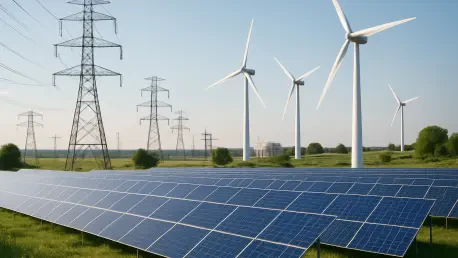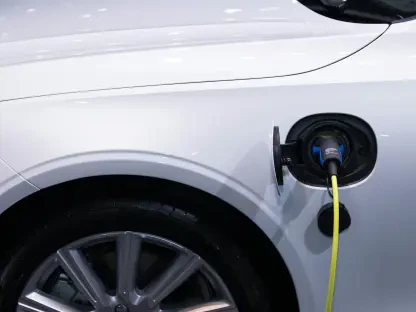For more than a century, the American electric grid has been built on a deceptively simple premise: generate electricity at large, centralized power plants and send it across long transmission lines to communities and factories. This model, often referred to as the “centralized utility model,” was effective when electricity demand was relatively predictable, populations were concentrated, and technological change occurred at a gradual pace. Large coal, natural gas, and nuclear plants could reliably supply cities and industry for decades without the need for frequent upgrades.
Today, however, the grid faces an unprecedented set of pressures that challenge this century-old model. Data centers that handle artificial intelligence workloads are experiencing significant increases in electricity demand. Additionally, the swift adoption of electric vehicles is contributing to these localized spikes in energy consumption. Advanced manufacturing hubs and residential microgrids are further compounding the issue, necessitating a reevaluation of energy infrastructure. Climate-driven weather events, including hurricanes and extreme heat waves, are testing the resilience of aging infrastructure.
This article explains why the traditional centralized utility model is increasingly strained and how a distributed utility layer at the grid edge can enhance resilience and efficiency for modern energy demands.
When the Grid Can’t Keep Up
Modern infrastructure projects come with both high costs and long timelines. For instance, new high-voltage transmission lines routinely cost millions of dollars per mile, ranging from $1 million to $8 million per mile, depending on terrain, voltage requirements, and permitting complexities. Even when projects are fully funded, they can take four to ten years to obtain permits, build, and come online. This lag is incompatible with the needs of today’s economy, where electricity demand can surge almost overnight in concentrated industrial or urban zones.
Across the United States, utilities are increasingly facing a dilemma. They are informing major customers, such as hyperscale data centers or large manufacturing facilities, that there simply isn’t enough local capacity to meet demand. In many cases, waiting a decade for a new transmission is not a viable option, as industries cannot pause operations for infrastructure development. These gaps highlight a fundamental mismatch between centralized grid planning and the dynamic demands of a modern digital economy.
Decentralized Energy, Real-Time Impact
To address the evolving challenges, the electric grid requires a distributed utility layer. This concept is similar to how cloud computing transformed IT infrastructure. Just as cloud services have replaced large, centralized data centers with flexible, decentralized computing resources, the power system is also evolving in a similar manner. Instead of relying solely on massive, centralized plants, distributed utility plants introduce modular, localized capacity directly at the grid edge.
Typically, a partitioned utility unit is smaller than ten megawatts. This scale allows utilities to add capacity exactly where it’s needed, when it’s needed, rather than waiting years for large, centralized projects to navigate regulatory and financial hurdles. For example, a modular microgrid deployed at a hospital or industrial park can immediately stabilize local demand and prevent outages, whereas building a new substation or transmission line might take several years.
In regions with clear interconnection rules and tariffs, distributed projects have been approved and deployed within a year. In other regions, however, projects often face lengthy interconnection queues, which delay the benefits. By decentralizing capacity, utilities can overcome these bottlenecks, accelerating the transition to a more resilient and responsive grid.
The Economics of Resilience
The financial stakes of grid instability are enormous. Outages and power-quality disturbances cost U.S. businesses billions of dollars each year. Even brief interruptions can result in millions of dollars in lost productivity for data centers, manufacturing plants, and logistics hubs.
Decentralized utility plants offer a transformative solution to this challenge. By delivering real-time stabilization and improving power quality, these localized systems minimize the economic impact of interruptions. For industrial customers, the benefits are tangible, including fewer production delays and reduced risk of equipment damage. For utility companies, modular energy solutions can match the performance of peaker plants or long-distance transmission lines while incurring significantly lower costs.
Consider a semiconductor fabrication facility. A few minutes of voltage fluctuation or an unexpected outage can ruin thousands of wafers, resulting in millions of dollars in losses. A nearby networked utility setup can regulate voltage in real-time and supply backup power to prevent critical failures. In this way, modular, edge-based energy resources are not just a technical improvement but an economic imperative.
Cybersecurity at the Edge
As electricity generation moves closer to the load, cybersecurity becomes as important as physical performance. Partitioned systems are connected, intelligent, and networked, which makes them potential targets for cyberattacks. Utilities and regulators are increasingly mandating cyber-secure-by-design architectures for distributed resources.
The guidelines involve building layered defenses and continuous monitoring into each system from the outset. Additionally, distributed resources must integrate securely with existing utility operations and grid management software. Without robust cybersecurity, the very resilience that decentralized systems promise could be compromised, making digital security just as critical as energy storage or voltage stabilization.
A Competitive and Innovative Space
The distributed utility market is vibrant and growing. Numerous technological approaches are being explored, including containerized lithium-ion batteries, flow batteries, mechanical storage systems, and hybrid renewable-storage microgrids. While the technology varies, the overarching goal is the same: deliver stability, modularity, and reliability at the edge.
Successful solutions will be those that can respond instantly to grid fluctuations and scale efficiently as demand grows. In effect, these systems act as digital “shock absorbers,” smoothing out energy flows and preventing disruptions that would otherwise ripple across the network. Companies that can deliver such solutions will define the next chapter of grid innovation, particularly as industries demand ever higher standards of uptime and reliability.
Looking Forward: Policy, Regulation, and Industry Alignment
The U.S. Department of Energy has set ambitious goals for the adoption of clean energy, long-duration energy storage, and decarbonization. Meeting these objectives will require more than simply building new transmission lines or centralized generation plants. The focus must also shift toward smarter segmentation, real-time stabilization, and deploying resources where they are most urgently needed.
Policies that encourage the adoption of distributed energy are crucial. This can be achieved through standardized interconnection procedures, clear tariffs, and streamlined permitting. It is equally important to foster partnerships among utilities, technology providers, and large energy consumers, facilitating the rapid deployment and effective scalability of modular systems.
To fully realize this transformation, policy alignment, regulatory modernization, and cross-sector collaboration are essential. The future of grid resilience will not be built from the center out, but from the edge in.









